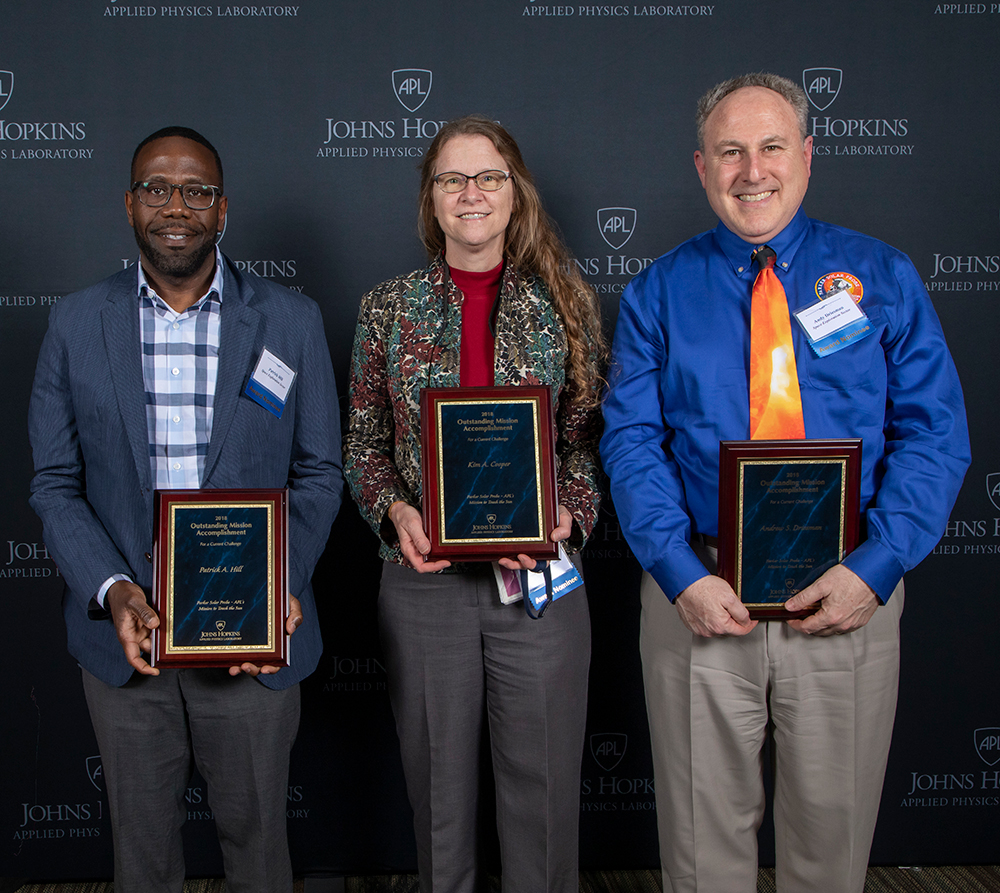Press Release
Johns Hopkins APL Team Earns AIAA Space Program Management Award
The Johns Hopkins Applied Physics Laboratory (APL) team managing NASA’s Parker Solar Probe mission was recognized by the American Institute of Aeronautics and Astronautics (AIAA) with the von Braun Award for Excellence in Space Program Management.
APL’s Andy Driesman, the Parker Solar Probe project manager; Patrick Hill, deputy project manager; and Kim Cooper, deputy project manager for instruments during the development phase, were lauded for balancing elements from science requirements and budgets to schedule and engineering development for the historic voyage to explore the Sun’s blistering environment and mysterious solar wind.
“We applaud the entire APL team for this award,” said Jason Kalirai, mission area executive for Civil Space at APL. “Andy, Patrick and Kim led the management of the historic Parker Solar Probe mission from concept to completion, and we are thrilled that they are being recognized for all of the hard work they put in.”
Physicist Eugene Parker first theorized the existence of the solar wind — the fast-moving flow of particles emanating from the Sun’s surface — in 1958. It took almost 60 years to design a revolutionary spacecraft that could withstand the intense heat and radiation that awaited it in the Sun’s corona. APL began developing Parker Solar Probe — named for Eugene Parker, in a nod to his bold theory — in earnest in 2015.
Driesman and the management team oversaw all elements of spacecraft development, including a broad team of industry, academic and government partners and suppliers, while also shepherding the technical, cost and schedule planning for the mission. Hill joined the mission as deputy program manager in 2014 and guided the day-to-day progress of spacecraft development and operations, including integration, test, launch and in-flight commissioning of Parker Solar Probe’s systems and science instruments. Cooper supervised the development of the onboard instruments, directing teams from four partner institutions, including the University of California, Berkeley; Princeton University; Naval Research Laboratory; and University of Michigan/Smithsonian Astrophysics Observatory.

